Vancouver Island
Vancouver Island is an island in the northeastern Pacific Ocean, and part of the Canadian province of British Columbia. The island is 456 km (283 mi) in length, 100 km (62 mi) in width at its widest point, and 32,134 km2 (12,407 sq mi) in area. The island is the largest by area and the most populous along the west coasts of the Americas.
The southern part of Vancouver Island and some of the nearby Gulf Islands are the only parts of British Columbia or Western Canada to lie south of the 49th parallel. This area has one of the warmest climates in Canada, and since the mid-1990s has been mild enough in a few areas to grow Mediterranean crops such as olives and lemons.The population of Vancouver Island was 870,297 as of 2019. Nearly half of that population (401,700) live in the metropolitan area of Greater Victoria, the capital city of British Columbia. Other notable cities and towns on Vancouver Island include Nanaimo, Port Alberni, Parksville, Courtenay, and Campbell River.
Indigenous peoples had inhabited Vancouver Island for thousands of years, long before the arrival of Spanish and British naval expeditions in the late 18th century. The Spanish and British conjointly named it Quadra's and Vancouver's Island in commemoration of the friendly negotiations held in 1792 between the Spanish commander of Fort San Miguel in Nootka Sound, Juan Francisco de la Bodega y Quadra, and British naval captain George Vancouver, during the Nootka Crisis. (Bodega y Quadra's name was eventually dropped.) It is one of several North American locations named after George Vancouver, who between 1791 and 1794 explored the Pacific Northwest coast.
Vancouver Island is the world's 43rd largest island, Canada's 11th largest island, and Canada's second most populous island after the Island of Montreal.
-
1
History
-
1.1
Indigenous peoples
- 1.1.1 Kwakwakaʼwakw
- 1.1.2 Nuu-chah-nulth
- 1.1.3 Coast Salish
- 1.2 European exploration
- 1.3 Dispute over sovereignty
-
1.4
British settlement
- 1.4.1 Union and Confederation
- 1.4.2 Confederation
-
1.1
Indigenous peoples
- 2 Geography
- 3 Geology
- 4 Ecology
- 5 Demographics
-
6
Economy
- 6.1 Technology
- 6.2 Logging
- 6.3 Fishing
- 6.4 Tourism
- 6.5 Food products
-
7
Education
- 7.1 Universities
- 7.2 Colleges
- 7.3 Public school districts
- 7.4 Private schools
-
8
Transport
-
8.1
Sea
- 8.1.1 BC Ferries
- 8.1.2 Washington State Ferries
- 8.1.3 Black Ball Transport
- 8.1.4 Passenger-only service
- 8.2 Rail
- 8.3 Road
- 8.4 Air
-
8.1
Sea
- 9 See also
- 10 Notes
- 11 References
- 12 Further reading
- 13 External links
Links
Images Gallery
-
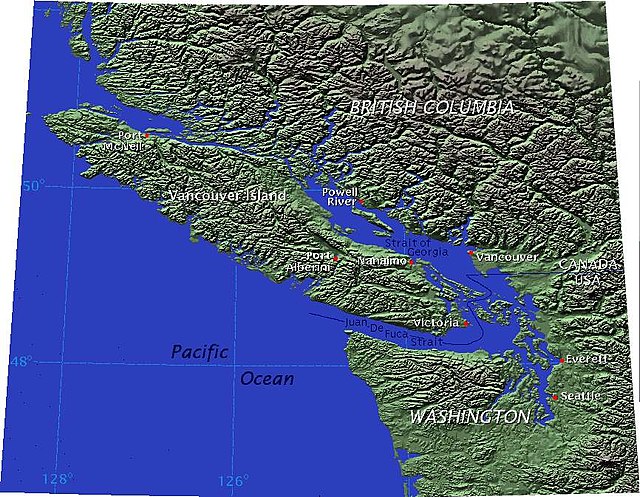
-

-

-
-

-
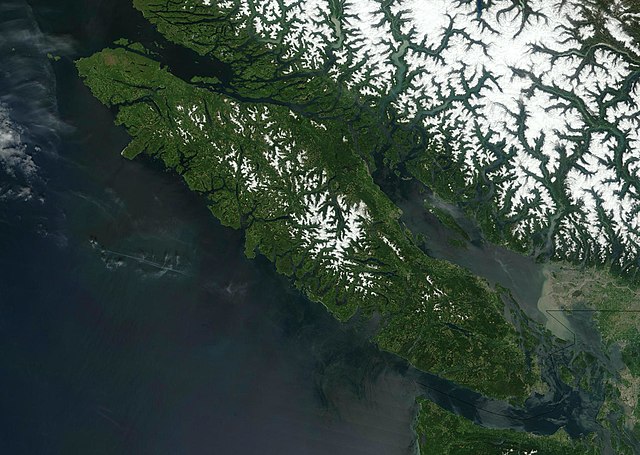
-
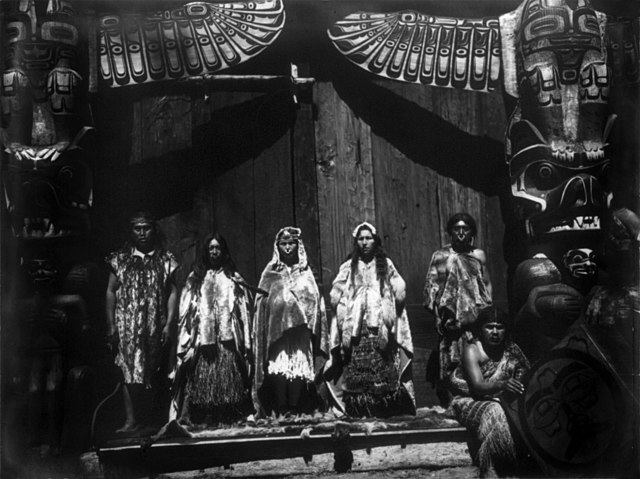 A Kwakwakaʼwakw wedding ceremony in 1914
A Kwakwakaʼwakw wedding ceremony in 1914
-
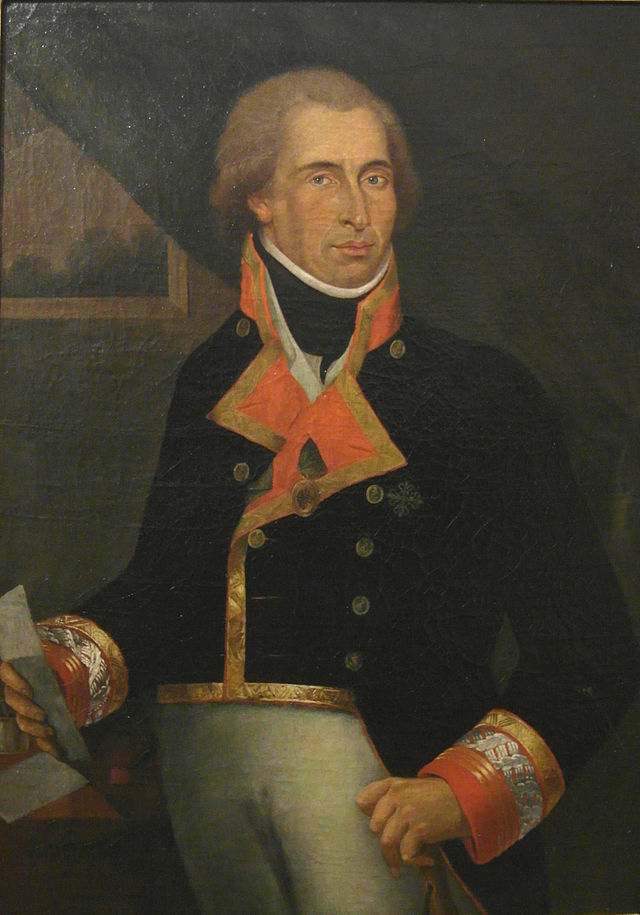 Dionisio Alcalá Galiano was the first European to circumnavigate Vancouver Island
Dionisio Alcalá Galiano was the first European to circumnavigate Vancouver Island
-
 The Great Seal of the Island of Vancouver and its Dependencies was designed by Benjamin Wyon, Chief Engraver of Her Majesty's Seals, c. 1849. The symbolic badge he designed was the basis for the flag of Vancouver Island, which is still unofficially flown today.[16]
The Great Seal of the Island of Vancouver and its Dependencies was designed by Benjamin Wyon, Chief Engraver of Her Majesty's Seals, c. 1849. The symbolic badge he designed was the basis for the flag of Vancouver Island, which is still unofficially flown today.[16]
-
 Köppen climate types in Vancouver Island and the Gulf Islands
Köppen climate types in Vancouver Island and the Gulf Islands
-
 The centre of Vancouver Island contains high mountains, such as Golden Hinde.
The centre of Vancouver Island contains high mountains, such as Golden Hinde.
-
 The western side of Vancouver Island hosts a rainforest.
The western side of Vancouver Island hosts a rainforest.
-
 View from Mount Maguire in East Sooke Regional Park towards Washington
View from Mount Maguire in East Sooke Regional Park towards Washington
-
 Northern resident orca Springer with her first calf in 2013.
Northern resident orca Springer with her first calf in 2013.
-
 Vancouver Island population based on gender[27]
Vancouver Island population based on gender[27]
-
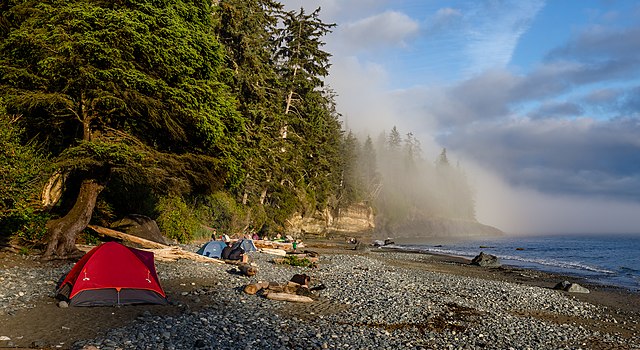 Campsite at Mystic Beach
Campsite at Mystic Beach
-
 BC Ferries MV Spirit of Vancouver Island, en route from Swartz Bay to Tsawwassen
BC Ferries MV Spirit of Vancouver Island, en route from Swartz Bay to Tsawwassen
-
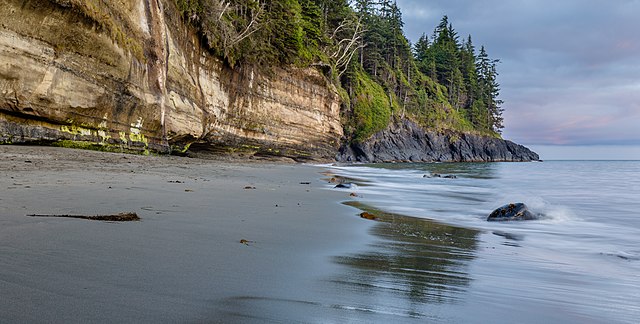
-
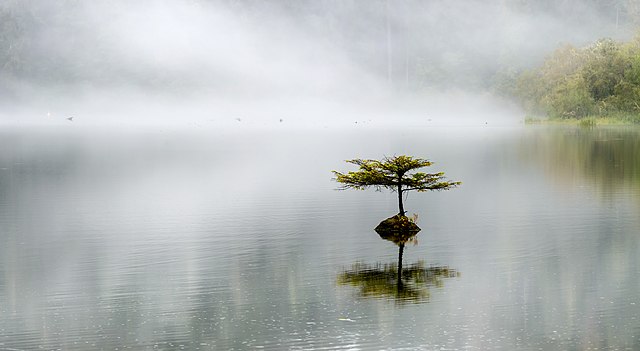
-

-

-

Comments
Share your experience with others and write the first comment about the location








![The Great Seal of the Island of Vancouver and its Dependencies was designed by Benjamin Wyon, Chief Engraver of Her Majesty's Seals, c. 1849. The symbolic badge he designed was the basis for the flag of Vancouver Island, which is still unofficially flown today.[16] File:The_Great_Seal_of_Colony_of_the_Island_of_Vancouver_and_its_Dependencies.jpg](http://upload.wikimedia.org/wikipedia/commons/thumb/9/96/The_Great_Seal_of_Colony_of_the_Island_of_Vancouver_and_its_Dependencies.jpg/640px-The_Great_Seal_of_Colony_of_the_Island_of_Vancouver_and_its_Dependencies.jpg)





![Vancouver Island population based on gender[27] File:Island_Population_Distribution.jpg](http://upload.wikimedia.org/wikipedia/commons/thumb/c/cd/Island_Population_Distribution.jpg/640px-Island_Population_Distribution.jpg)






